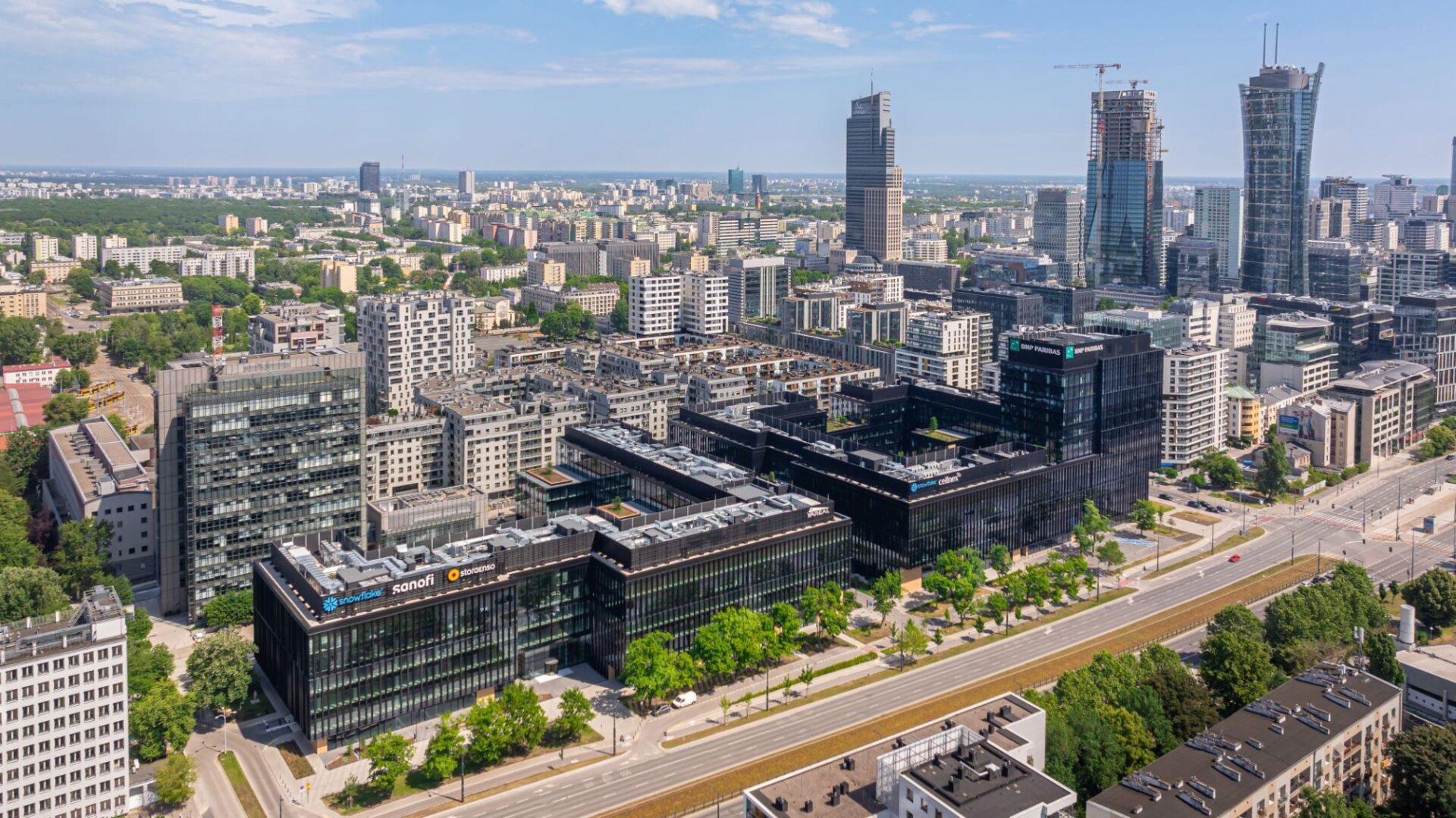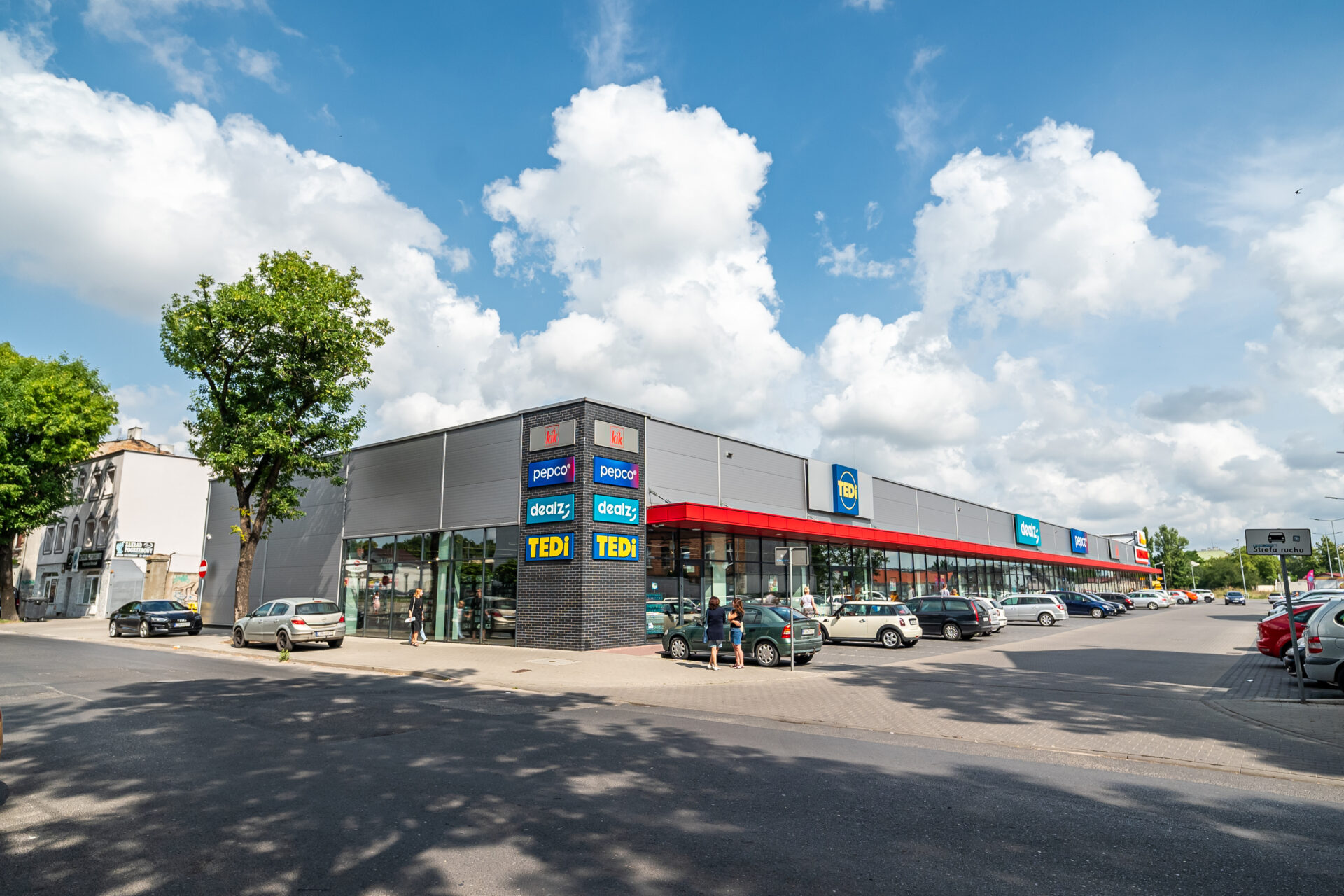According to real estate advisory firm Savills, the investment volume on the Polish commercial property market reached €5.29 billion during 2020. The key driver was the industrial sector, which accounted for half of the total volume, with industrial assets becoming more sought-after than offices or retail properties for the first time in history.
Commercial real estate investment activity tends to peak during the last quarter of each year. According to Savills data, it was, however, the first quarter of 2020, when the impacts of the coronavirus pandemic were only starting to permeate across Europe, that posted the highest investment volume last year at approximately €1.7 billion. The fourth quarter saw just €1.26 billion transact, well below the five-year average for the three months to December and two-and-a-half times lower than the volume recorded in the fourth quarter of 2019, which was a peak year for the Polish commercial property market. Overall, total investment activity in 2020 fell by 32 percent year-on-year.
“Pandemic-related restrictions have clearly taken their toll on the real estate market. Due to a high level of uncertainty and the wait-and-see strategy adopted by most investors, weaker transaction volumes were inevitable. Unlike in the previous financial crisis in the aftermath of the collapse of Lehman Brothers, Poland entered the pandemic period as a much more mature market. The Polish market saw a record-breaking real estate investment volume in the year preceding the GFC, just as it did in 2019 before the pandemic struck. In 2006, the then remarkable volume, however, was lower than the trading volumes posted in the challenging year 2020. The real estate market slowed considerably due to the pandemic, but by no means did it come to a halt,” says Tomasz Buras, CEO, Savills Poland.
Investment activity in the industrial sector reached an all-time high in 2020 with €2.61 billion transacted, accounting for 49.4 percent of the annual total and representing a 65 percent increase year-on-year. The largest contributors were portfolio deals, including the acquisition of Goodman’s assets by GLP, and the sale of Panattoni Europe’s five warehouse facilities (280,000 sqm) to an Asian investor who was represented during the transaction by Savills Investment Management. Demand for warehouses was driven by the accelerated growth of e-commerce and the relative resilience of logistics facilities to the economic downturn caused by the pandemic.
“Benefiting from its strategic location on the New Silk Road, Poland is also becoming the first point of entry into the German or UK real estate markets for Chinese investors. With such intense demand for this asset class, prime office and industrial yields are likely to converge this year. Healthy supply will, in turn, lead to pressure on land prices that may reach unprecedented levels, while strong demand on the industrial occupier market is likely to result in rental growth in the medium to long term,” says Tomasz Buras.
According to Savills, Poland’s office investment volume climbed to €1.98 billion in 2020, down by 48 percent year-on-year, accounting for 37.5% of the annual total. Assets that changed hands in the last 12 months included Lixa, T-Mobile Office Park, Wola Center and Prosta Office Tower in Warsaw, and Equal Business Park in Krakow. Retail investment made up around 12.5 percent of all deals (€0.66 billion). Shopping centres hit by lockdown restrictions have been replaced on investors’ radars by retail parks in medium-sized cities and convenience retail schemes for buying essential goods, especially food.
“Contrary to some fears and popular sentiments that can be traced to the still prevalent remote work in many companies, the office market was not affected as badly as some would have thought. At the end of 2020, Warsaw’s vacancy rate stood at 9.9 percent, up by 2.1 pp on 2019, but it was still well below the rate seen in the years 2014-2016 when the capital city’s office market experienced a strong wave of new supply. Despite the pandemic, office leasing activity continued, with the Polish market seeing a record-breaking deal. This is likely to spur investors on to resume allocating capital to this sector in 2021,” adds Tomasz Buras.
2020 saw notable growth in investment activity across the Private Rented Sector (PRS). While this sector is still in its infancy in Poland, the living sector in Germany and the Nordics, for instance, is ranked high in terms of investment volumes, frequently ahead of offices and warehouses. The lack of investment product has had a knock-on effect on the structure of transactions which tend to be concluded upon securing financing for development projects or starting construction works. An example of such cooperation is the contract between Eiffage Immobilier Polska and Heimstaden Bostad, on which Savills advised. It will see the construction of 640 build-to-rent apartments across two projects in Warsaw. According to Savills, due to the growing uncertainty on the residential market, there is a growing number of developers choosing to sell some projects to institutional investors. Savills analysts also note that investor appetite for purpose-built student accommodation is showing no sign of weakening despite universities remaining closed.
“The market continues to be awash with capital to be allocated to real estate. Despite the roll-out of the Covid-19 vaccination programme and given the time required to inoculate a substantial proportion of the population and high infection rates, caution is advised with regard to short-term forecasts. With overseas investors accounting for more than 90 percent of the investment activity on the Polish commercial property market, the travel restrictions in place will also hinder the return to normality. The first tangible signs of a stronger recovery are expected in the second half of the year. Real estate will retain the status of one of the most sought-after investment assets in the long term. Whilst emerging as a leading European industrial market and benefiting from the huge potential of the budding PRS, Poland will certainly continue to attract strong investor interest,” concludes Tomasz Buras, Savills.







